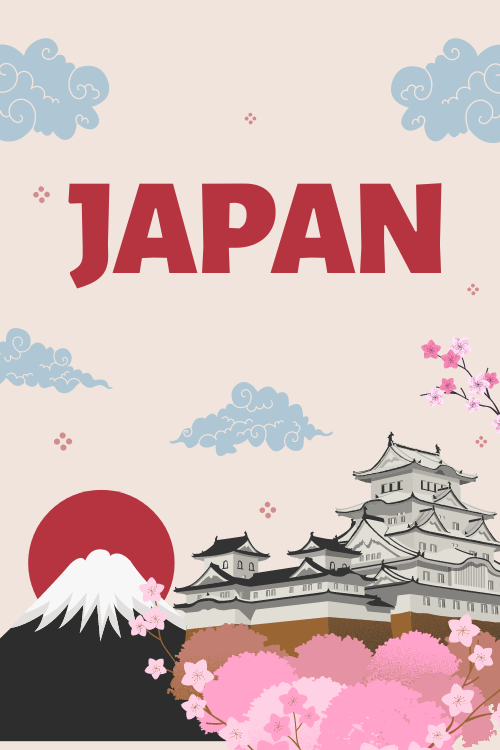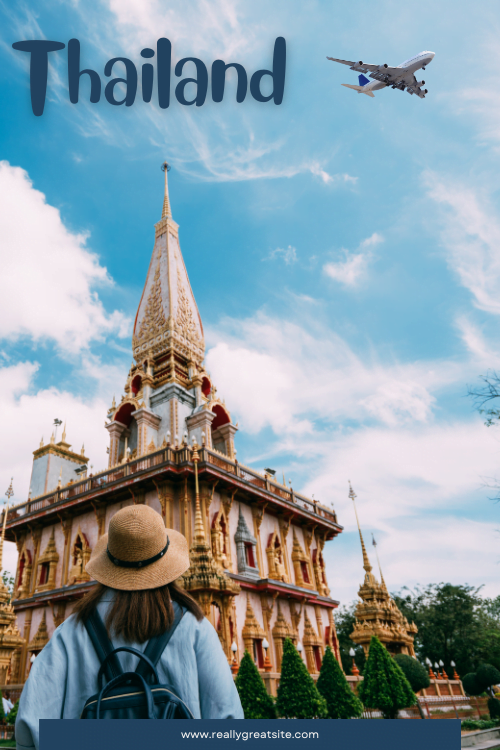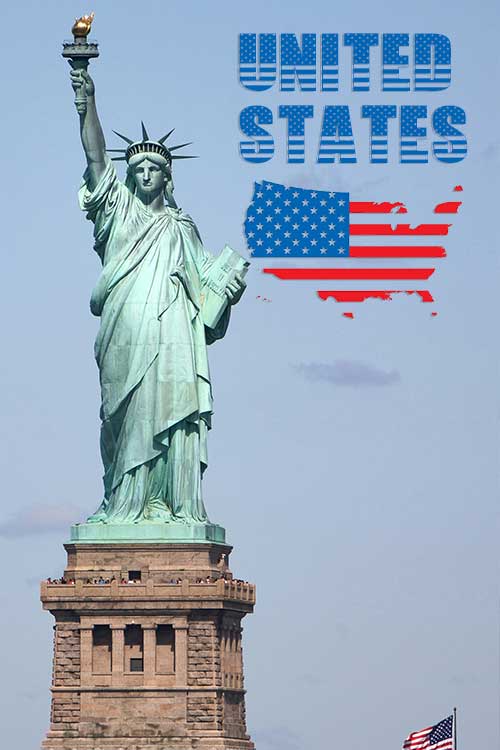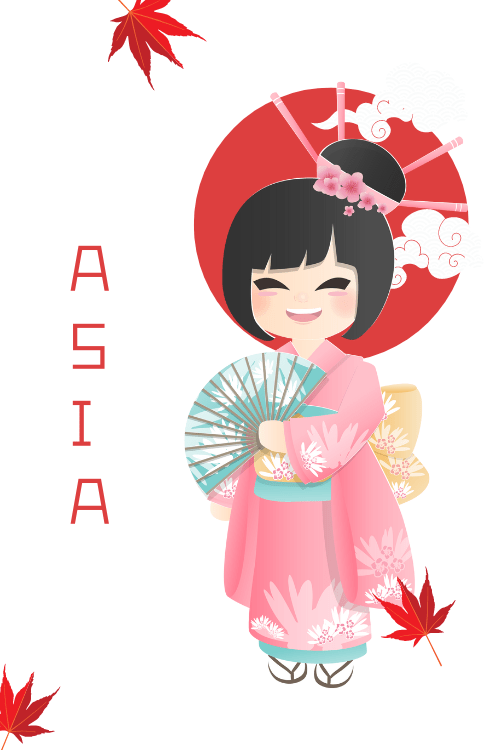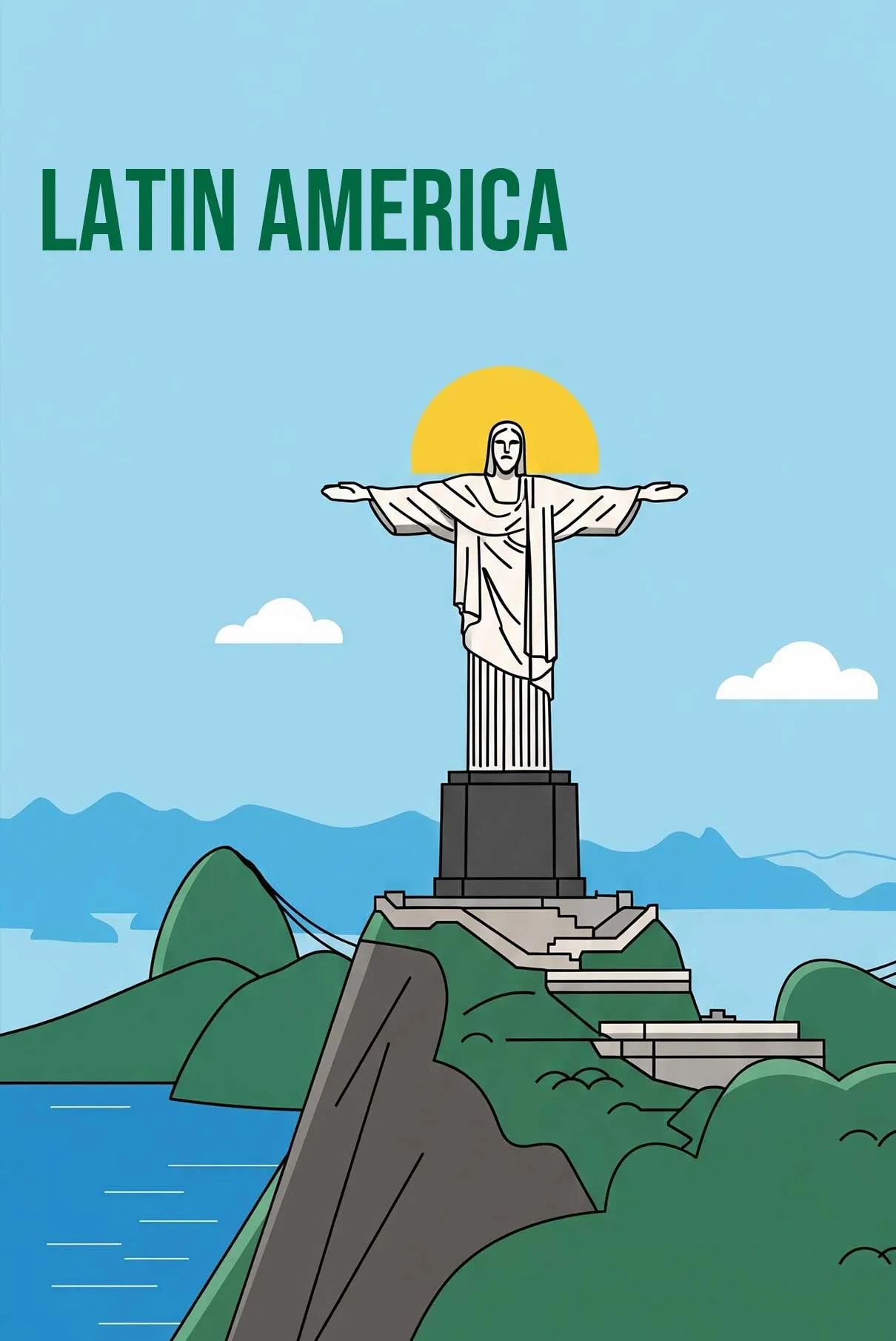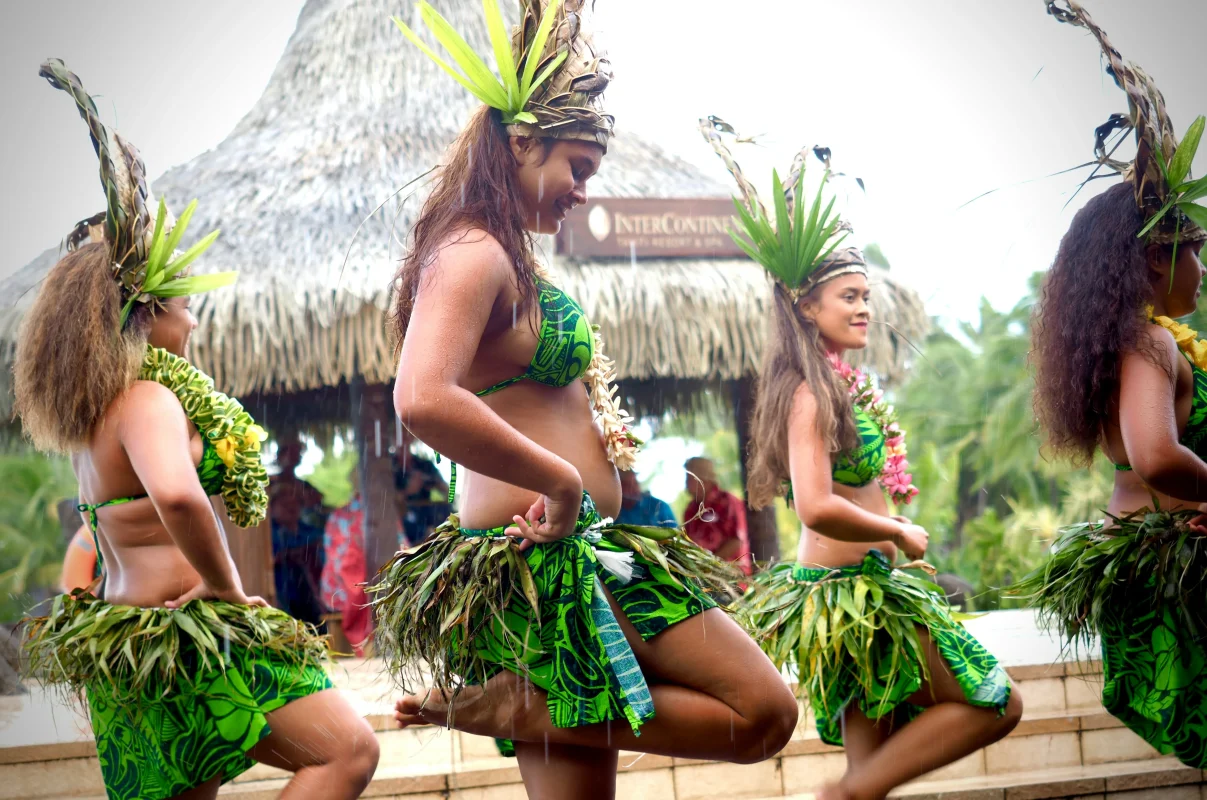Best Time To Visit
Best Time to Visit Tahiti? The Ultimate Guide 2025
Tahiti, the largest island in French Polynesia, conjures images of idyllic overwater bungalows, turquoise lagoons teeming with life, and dramatic volcanic peaks draped in emerald green.
It’s a destination synonymous with paradise.
Yet, deciding when to experience this paradise involves navigating a complex interplay of factors. While the allure of Tahiti is constant, the “best” time to visit is subjective, heavily dependent on individual priorities regarding weather, budget, desired activities, tolerance for crowds, and even the specific islands within French Polynesia one plans to explore.
This guide provides detailed insights, moving beyond simple seasonal summaries to offer a comprehensive, data-driven perspective.
Understanding Tahiti’s Tropical Climate: Weather Year-Round
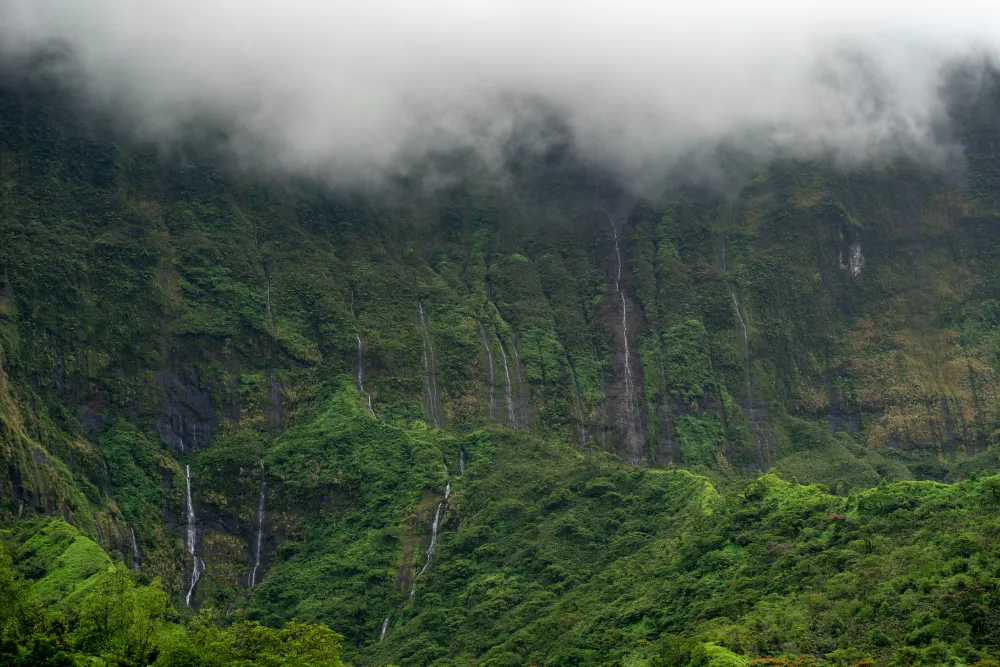
Tahiti and its surrounding islands boast a tropical climate, characterized by warmth and sunshine throughout the year. However, distinct seasonal variations significantly influence the travel experience. Understanding these patterns, including temperature fluctuations, rainfall, humidity, wind, and the rare possibility of cyclones, is crucial for planning.
Tahiti’s Two Main Seasons Explained
French Polynesia experiences two primary seasons dictated by shifts in temperature, humidity, rainfall, and wind patterns:
- The Dry Season (May – October): Often referred to as the “Austral Winter,” this period is generally considered the most desirable time to visit for weather.
Characterized by lower humidity, average daily temperatures ranging comfortably between 70-80°F (21-27°C), abundant sunshine, and pleasant breezes, it offers ideal conditions for most activities. This season is influenced by the southeasterly trade winds, known locally as the Maraamu.
The Maraamu brings cooler, drier air, significantly reducing humidity and making daytime exploration and nighttime rest more comfortable.
These winds peak particularly in July and August, and while they contribute to the pleasant climate, they can occasionally blow strongly (up to 30 knots or more), making lagoon waters choppy and open ocean passages potentially rougher.
The dry season is optimal for beach holidays, hiking, lagoon excursions, and offers the best underwater visibility for diving and snorkeling. However, this period, especially June through August, represents the peak tourist season, leading to higher prices for flights and accommodations and more crowded popular spots. - The Wet Season (November – April): Corresponding to the Southern Hemisphere’s summer, this season features higher humidity (averaging 80-85%) and warmer temperatures, typically ranging from 77°F to 95°F (25°C to 35°C).
Rainfall is more frequent and can be intense, particularly from December to February, which are typically the wettest months.
However, these tropical showers are often brief, lasting perhaps 30 minutes to an hour, and are frequently followed by periods of sunshine. This period is considered the low season for tourism, resulting in lower prices for flights and accommodation and significantly fewer crowds.
The increased rainfall nourishes the islands’ flora, resulting in exceptionally lush green landscapes and spectacular, full-flowing waterfalls, appealing to nature lovers. It’s also considered the “season of abundance” for tropical fruits.
The main drawbacks are the higher humidity, increased chance of prolonged rain disrupting outdoor plans, slightly reduced underwater visibility due to potential runoff , and the low but present risk of cyclones. - Shoulder Seasons (April-May & September-October): These transitional months often represent a “sweet spot” or “goldilocks time” for visitors seeking a balance. April sees the end of the wet season, with decreasing rain and humidity, while May offers pleasant dry season weather before the peak crowds arrive.
September and October offer excellent dry season weather as the peak crowds of July/August diminish, and prices may start to decrease. These periods often provide great value, combining favorable weather with fewer tourists and more moderate pricing compared to the absolute peak season.
Whale watching season also extends through October and sometimes into early November.
This “Invisible” SIM Card is Saving Ordinary Travellers Hundreds on International Trips
You see those travelers glide through airport arrivals – calm, internet connected, already booking their ride-share while others are frantically searching for Wi-Fi or queuing at chaotic phone kiosks…
What’s their secret?
When you travel overseas you’re either paying insanely high data-roaming fees from your home carrier or frantically hunting down some local SIM card kiosk the second you land, wasting precious vacation time just trying to get your phone working.
One leaves you with a bill that leaves a sour taste in your mouth after a great trip. The other eats into your actual holiday, causing stress and hassle when you should be exploring.
But what if I told you that ordinary travelers just like you have figured out a way to completely bypass this frustrating experience?
They’re using something most travelers don’t even know exists… a kind of “invisible” SIM card technology that you likely already have on your phone right now.
And it’s allowing them to tap into super-cheap, high-speed data anywhere in the world… without swapping cards, without visiting a store, and without getting ripped off.
It’s called an eSIM.
And eSIM4.com makes getting one simple.
Here’s how it works:
- Step 1: Go to eSIM4.com.
- Step 2: You pick your destination, choose a data plan.
- Step 3: We send you a simple QR code. You scan it with your phone’s camera.
Your new travel SIM is installed in under 3 minutes!
The moment your plane’s wheels hit the tarmac overseas? Your phone instantly connects to a fast, local network.
No queues. No fumbling with tiny plastic chips. No nasty bill shock.
Just seamless, affordable data letting you use Google Maps, WhatsApp, Uber, Instagram… whatever you need… right away.
This is how travel is supposed to work. And it’s saving people like you hundreds of dollars on a single trip.
Stop letting the big phone companies treat your travel budget like their personal ATM. Stop wasting your valuable vacation time being disconnected or stressed.
Join the smart travelers who’ve already made the switch.
CLICK HERE TO GET STARTEDTahiti Weather Month-by-Month: A Detailed Breakdown
For more precise planning, examining the average monthly climate data is essential. Standard weather apps can sometimes be misleading for tropical destinations like Tahiti; a forecast of “rain” might only reflect a brief afternoon shower, with the rest of the day being sunny. Therefore, understanding the typical monthly averages provides a more reliable picture.
Table 1: Tahiti (Papeete) Monthly Climate Averages
| Month | Avg High Temp (°C/°F) | Avg Low Temp (°C/°F) | Avg Rainfall (mm/in) | Avg Rainy Days | Avg Sunshine Hours/Day | Avg Water Temp (°C/°F) | Humidity (%) | Key Notes |
| January | 31°C / 88°F | 23°C / 73°F | 318 mm / 12.5 in | 15-18 | 7 | 28°C / 82°F | ~85% | Peak Wet Season, High Humidity, Highest Rainfall, Cyclone Risk (Low) |
| February | 31°C / 88°F | 23°C / 74°F | 278 mm / 10.9 in | 13-16 | 7 | 29°C / 84°F | ~85% | Wet Season, High Humidity, High Rainfall, Cyclone Risk (Low), FIFO Event |
| March | 32°C / 89°F | 23°C / 74°F | 240 mm / 9.5 in | 11-17 | 7 | 29°C / 84°F | ~85% | Wet Season, High Humidity, Rainfall Decreasing, Cyclone Risk (Low) |
| April | 32°C / 89°F | 23°C / 74°F | 143 mm / 5.6 in | 9-12 | 8 | 29°C / 84°F | ~80% | Shoulder Season Begins, Less Rain, Humidity Decreasing, Good Value |
| May | 31°C / 88°F | 23°C / 73°F | 150 mm / 5.9 in | 6-10 | 7 | 28°C / 82°F | ~80% | Dry Season Begins, Good Weather, Lower Humidity, Good Value |
| June | 30°C / 86°F | 22°C / 71°F | 81 mm / 3.2 in | 5-6 | 7 | 27°C / 81°F | ~75% | Dry Season, Excellent Weather, Low Humidity, Peak Season Starts |
| July | 30°C / 86°F | 21°C / 70°F | 63 mm / 2.5 in | 3-5 | 8 | 27°C / 81°F | ~75% | Peak Dry Season, Coolest Temps, Low Humidity, Maraamu Winds, Heiva, Peak Crowds/Prices |
| August | 30°C / 86°F | 21°C / 70°F | 66 mm / 2.6 in | 3-4 | 8 | 26°C / 79°F | ~75% | Peak Dry Season, Driest Month, Coolest Temps, Maraamu Winds, Peak Crowds/Prices, Whale Season Starts |
| September | 30°C / 86°F | 22°C / 71°F | 64 mm / 2.5 in | 5 | 8 | 26°C / 79°F | ~75% | Dry Season, Excellent Weather, Peak Whale Season, Crowds/Prices Start to Ease |
| October | 31°C / 87°F | 22°C / 72°F | 121 mm / 4.8 in | 5-6 | 8 | 27°C / 81°F | ~75-80% | Shoulder Season, Good Weather, Humidity/Rain Increase Slightly, Whale Season Continues |
| November | 31°C / 87°F | 23°C / 73°F | 155 mm / 6.1 in | 6-10 | 7 | 27°C / 81°F | ~85% | Wet Season Begins, Warmer, More Humid, Good Value, Whale Season Ends |
| December | 30°C / 86°F | 23°C / 73°F | 397 mm / 15.6 in | 12-14 | 6 | 28°C / 82°F | ~85% | Wet Season, High Humidity, High Rainfall, Cyclone Risk (Low), Holiday Crowds/Prices |
Data synthesized from various sources. Averages are approximate and based on historical data (primarily Papeete); actual conditions can vary. Data sources include Meteociel, WeatherAPI, TimeandDate, Weather2Travel, etc. NOAA data provides reliable long-term averages for the US, and similar principles apply to their global data collection, though specific long-term French Polynesia averages require careful sourcing.
Monthly Highlights:
- January: Peak wet season brings the highest rainfall, warmth, and humidity. It’s the least crowded month (outside holidays) and offers the best prices, but weather can be unpredictable.
- February: Still very wet and humid, similar to January, but rainfall slightly decreases. Hosts the FIFO film festival. Low crowds and prices continue. Cyclone risk remains, though low.
- March: Transition month. Rainfall lessens, but still warm and humid. Crowds start to slowly increase towards the end. Missionary Day is a public holiday.
- April: Shoulder season begins. Weather improves significantly with less rain and humidity. Good balance of decent weather and value. Ideal for diving in the Tuamotus.
- May: Start of the dry season and often cited as an excellent month to visit. Great weather, lower humidity, fewer crowds than peak summer, and good value. Tahiti Pearl Regatta often occurs this month.
- June: Excellent weather continues, low humidity, start of peak tourist season but often less crowded than July/August. Ideal for outdoor activities.
- July: Peak dry season, coolest temperatures, low humidity, but potentially strong Maraamu winds. Heiva i Tahiti festival dominates the month, attracting large crowds. Peak prices and crowds. Whale watching season begins.
- August: Often considered the month with the absolute best weather – driest, sunniest, coolest. Still peak season for crowds and prices. Prime whale watching. Tahiti Pro surfing event.
- September: Excellent weather continues, still dry and sunny. Peak whale watching season. Crowds and prices begin to decrease from the July/August peak, making it a great shoulder month within the dry season. Ideal for diving in Marquesas.
- October: End of the dry season, still generally good weather but with increasing chances of rain and humidity towards the end of the month. Whale watching continues. Shoulder season value. Hawaiki Nui Va’a race often late Oct/early Nov.
- November: Wet season begins. Temperatures and humidity increase, rainfall becomes more frequent. Fewer crowds and lower prices make it attractive for budget travelers. Last chance for whale sightings. Hura Tapairu dance competition.
- December: Wet season continues with high rainfall, warmth, and humidity. Landscapes are very lush. Good for budget travel but expect rain. Christmas/New Year period sees a spike in visitors and prices. Tiare Day festival. Marquesas Arts Festival (every 4 years).
Beyond Rain: Understanding Wind Patterns & Cyclone Risk
Tahiti’s weather isn’t just about sun and rain; wind and, very occasionally, cyclones play a role.
- Trade Winds & The Maraamu: The dominant wind pattern involves the southeasterly trade winds, particularly noticeable during the dry season (May-October). These winds are generally pleasant breezes. However, during the peak dry season, especially July and August, these trade winds can strengthen significantly, becoming what locals call the Maraamu. The Maraamu brings cooler, drier air, reducing humidity, which many find comfortable.
However, sustained strong winds (potentially 25-35 knots) can make lagoon waters choppy and ocean conditions rougher, potentially impacting boat tours or water sports. The South Pacific Convergence Zone (SPCZ) and, to a lesser extent, the Intertropical Convergence Zone (ITCZ), influence these patterns, shifting wind direction and contributing to rainfall variability, particularly during transitions between seasons. - Cyclone Season (Nov-Apr): The official cyclone season runs from November to April, coinciding with the warmest sea surface temperatures. It’s important to note that French Polynesia, especially the Society Islands like Tahiti, Moorea, and Bora Bora, lies outside the main South Pacific cyclone belt and direct hits by major cyclones are relatively rare.
Historical data indicates significant cyclones are infrequent; one source mentions no major cyclones since 2010, while others cite Cyclone Oli in 2010, Cyclone Veena in 1983, and Cyclone Osea in 1997 as notable past events. Statistics show that the average annual probability of a cyclone making landfall in French Polynesia is low (e.g., less than one per year on average across all categories combined, with major cyclones being much rarer). The risk increases significantly during strong El Niño years, when weather patterns shift.
French Polynesia has a well-defined alert system (Yellow for potential threat, Orange for imminent risk, Red for imminent passage) to manage potential cyclone threats. Travelers visiting during this period should monitor forecasts and consider comprehensive travel insurance that covers weather-related disruptions.
What’s Your Travel Style? Best Times for Different Priorities
Choosing the “best” time to visit Tahiti hinges on balancing personal preferences for weather, budget, crowds, and desired experiences.
Best Time for Perfect Weather Seekers
For travelers prioritizing sunshine, blue skies, and comfortable conditions, the Dry Season (May – October) is unequivocally the prime time. This period boasts the lowest rainfall averages, reduced humidity levels thanks in part to the Maraamu winds, comfortable temperatures generally between 70-80°F (21-27°C), and the highest number of sunshine hours. These conditions are ideal for sunbathing on pristine beaches, enjoying lagoon activities like snorkeling and boat tours with excellent water clarity, and undertaking hikes into the volcanic interiors. However, this optimal weather coincides with the peak tourist season, particularly from June to August, driven by European and North American summer holidays. Consequently, expect higher prices for flights and accommodations, and more people at popular attractions.
Best Time for Budget Travelers
Travelers aiming to experience Tahiti without breaking the bank should target the Low Season (November – April), particularly January and February (excluding the Christmas/New Year holiday period), or the Shoulder Seasons (April, May, November). During these times, reduced tourist demand leads to more competitive pricing for international flights and accommodations, with potential savings of 25-40% compared to the high season, especially in January and February. April, May, and November are often highlighted as offering particularly good value.
To maximize savings, consider these strategies:
- Accommodation: Opt for pensions (family-run guesthouses) or budget hotels instead of luxury resorts. Pensions offer an authentic local experience and can cost significantly less, ranging roughly from $50 to $150 per night, compared to overwater bungalows which often start at $800-$1000+ per night. Airbnb rentals can also offer value, especially for groups.
- Food: Eat like a local. Utilize supermarkets for breakfast items and snacks. For affordable and authentic dinners, seek out the roulottes (food trucks) common in Papeete and other areas, where meals can cost around $10-$15. Splurge occasionally on restaurant meals ($20-$50+ per person).
- Island Choice: Consider exploring less-visited but equally beautiful islands like Huahine, Taha’a, Raiatea, or some of the Tuamotus (like Tikehau or Mataiva) or Australs (Rurutu, Raivavae), which tend to be more affordable than Bora Bora or Moorea.
- Transportation: For inter-island travel, Air Tahiti offers multi-island passes (e.g., Bora Bora Pass, Tuamotu Pass) which can be more economical than buying individual flights if visiting several islands within a specific timeframe (usually 28 days). Ferries are the most cost-effective option between Tahiti and Moorea. On islands, renting a scooter or car can be cost-effective compared to taxis, while public transport (where available) is cheapest.
- Booking: Book flights and accommodations well in advance, even for the low season, to secure the best rates. Be flexible with travel dates if possible. Look for package deals that bundle flights, accommodation, and sometimes meals or activities.
Table 2: Estimated Daily Budget Comparison (Per Person, USD)
| Season | Accommodation Style | Est. Accommodation Cost/Night | Est. Food Cost/Day | Est. Activities Cost/Day | Est. Total Daily Budget Range |
| Low Season (Nov-Apr, excl. holidays) | Pension/Budget | $50 – $150 | $30 – $60 | $20 – $70 | $100 – $280 |
| Mid-Range | $150 – $400 | $50 – $100 | $50 – $150 | $250 – $650 | |
| Luxury | $400 – $1000+ | $100 – $200+ | $100 – $300+ | $600 – $1500+ | |
| Shoulder Season (Apr-May, Sep-Oct) | Pension/Budget | $70 – $180 | $30 – $60 | $30 – $80 | $130 – $320 |
| Mid-Range | $200 – $500 | $50 – $120 | $60 – $180 | $310 – $800 | |
| Luxury | $600 – $1500+ | $120 – $250+ | $120 – $350+ | $840 – $2100+ | |
| High Season (Jun-Aug, holidays) | Pension/Budget | $100 – $250+ | $30 – $70 | $40 – $100 | $170 – $420+ |
| Mid-Range | $300 – $700+ | $60 – $150 | $80 – $200 | $440 – $1050+ | |
| Luxury | $800 – $2000+ | $150 – $300+ | $150 – $400+ | $1100 – $2700+ |
Disclaimer: These are rough estimates based on available data and can vary significantly based on specific choices, booking time, island, and individual spending habits. Food costs assume a mix of eating styles within the category. Activity costs are highly variable.
Best Time to Avoid Crowds
For travelers seeking tranquility and a more intimate experience, the Low Season (November – April), particularly January and February, sees the fewest visitors. The Shoulder Seasons (specifically May, June, September, October) also offer a respite from the peak crowds of July and August, providing a good balance between pleasant weather and fewer people. Visiting during these less busy times allows for a more relaxed atmosphere, easier booking of tours and restaurants, and the feeling of having some of the stunning beaches or viewpoints almost to oneself.
Best Time for Couples & Honeymooners
While Tahiti is romantic year-round, the Shoulder Seasons (May, June, September, October) are frequently recommended as the ideal time for couples and honeymooners. These months strike an excellent balance, offering the beautiful weather characteristic of the dry season but with fewer crowds than the July/August peak. This allows for more intimate experiences, quieter beaches, and potentially better availability or special offers at resorts. The pleasant temperatures and lower humidity are perfect for romantic dinners, sunset cruises, and relaxing in overwater bungalows. Of course, the entire Dry Season (May-October) offers superb weather, making it a fantastic choice if budget and crowds are lesser concerns.
Best Time for Families
For families traveling with children, the Dry Season (May-October) is generally the most recommended period. The primary reason is the lower humidity compared to the wet season, which makes outdoor activities, beach time, and exploring more comfortable for children of all ages. The reliable sunny weather minimizes the chance of rainy days disrupting plans. To avoid the busiest period and potentially higher costs associated with July and August school holidays (both internationally and locally), families might consider targeting the fringe months of the dry season: May, June, September, or October.
Tahiti Activities & Events: Timing Your Trip for Adventure & Culture
Beyond weather and crowds, the best time to visit Tahiti can depend on specific activities or cultural events you wish to experience.
Water Activities: When to Dive, Snorkel, and Surf
French Polynesia’s aquatic playground offers world-class opportunities year-round, but timing can enhance specific experiences.
- Diving & Snorkeling:
- General Conditions: Warm water temperatures, averaging 77-82°F (25-28°C), make diving and snorkeling comfortable throughout the year.
- Visibility: The Dry Season (May-October) typically offers the best underwater visibility, often exceeding 100 feet (30 meters), particularly in the Society Islands (Tahiti, Moorea, Bora Bora). This is due to reduced rainfall and less sediment runoff into the lagoons and passes. For the Tuamotu Atolls (Rangiroa, Fakarava), known for pass diving, April to November is specifically highlighted for excellent visibility. While diving is possible in the wet season, visibility might be slightly reduced after heavy rains.
- Marine Life Highlights: While many species like reef sharks (blacktip, whitetip, grey), turtles, dolphins, and tropical fish are seen year-round, certain encounters are seasonal:
- Humpback Whales: Migrate to French Polynesian waters (especially Society and Austral Islands) to breed and calve from July to November, with peak sightings often in August and September.
- Manta Rays: While present year-round in some locations (like Bora Bora’s Anau cleaning station), specific seasonal aggregations are noted, often cited between June and November. Tikehau is also mentioned for manta sightings.
- Hammerhead Sharks: Seasonality varies by archipelago. In the Tuamotus (Rangiroa/Fakarava), the season is typically February-March. In the Marquesas, sightings are more common July-September.
- Marbled Grouper Spawning: A major aggregation event attracting thousands of groupers and hundreds of sharks occurs in Fakarava’s south pass (Tumakohua) around the full moon in June and July. This requires booking well in advance.
- Dive Difficulty: Lagoons in the Society Islands (Moorea, Bora Bora) offer calm conditions suitable for beginners. The passes in the Tuamotus (Rangiroa, Fakarava) are famous for drift diving in potentially strong currents, requiring intermediate to advanced experience. Dive operators carefully time pass dives based on tides to manage currents.
- Surfing:
- Teahupo’o: This world-renowned wave on Tahiti’s southwest coast is known for its immense power and perfect barrels, strictly for expert surfers. While rideable year-round, the most powerful swells typically arrive during the Wet Season (November-April) and the Southern Hemisphere winter within the Dry Season (May-August). The Tahiti Pro competition usually takes place in August.
- Other Tahiti Spots: Tahiti offers diverse breaks. Papara features a black sand beach break suitable for intermediates. Papeno’o river mouth is ideal for beginners. Punaauia (Taapuna, Sapinus) offers quality left reef breaks. Vairao provides a long left near Teahupo’o. The East Coast (Faa’one) and North Coast (Orofara, Ahonu) also have spots, often better during different swell seasons. Generally, the West Coast sees larger swells from May to September, while the East Coast works better the rest of the year.
- Moorea Spots: Haapiti is the most famous, offering a long left-hander for intermediate and advanced surfers. Other spots include Atiha, Temae, and Hauru Point (Club Med). Moorea receives swells year-round; the wet season (Nov-Mar) often brings N/NW swells suitable for beginners, while the dry season (Apr-Sep) favors S/SW swells for more experienced surfers on the southern reefs.
- Surf Schools: Available primarily near beginner-friendly spots on Tahiti (Papenoo, Papara) and Moorea. Reputable schools include Taie Fa’Ahe’e, He’e Roa, Tahiti Nui Surf School, Moana Surf School (Teahupo’o focused), and Aloha Surf School. Tahiti Surf Experience (run by Tereva David) is another option.
Nature & Exploration: Hiking, Beaches, and Whale Watching
- Hiking & Waterfalls: The Dry Season (May-October) is generally preferred for hiking due to cooler temperatures, lower humidity, and less muddy/slippery trails. However, the Wet Season (November-April) brings the islands’ lush interiors to their most vibrant green and ensures waterfalls are flowing spectacularly. Popular spots include Tahiti’s Papenoo Valley, Faarumai Waterfalls, Vaipahi Gardens, Maraa Grottoes, and Moorea’s Belvedere Lookout and hiking trails. Guided hikes are recommended, especially for more challenging trails or during wetter conditions.
- Beaches & Lagoons: The Dry Season (May-October) offers the most reliable sunshine and calmest lagoon conditions for swimming, sunbathing, kayaking, paddleboarding, and lagoon tours. The Maraamu winds in July/August can make lagoons choppier. The wet season still offers plenty of opportunities for lagoon enjoyment between showers, often with fewer people. Famous beaches include Matira Beach (Bora Bora) and Temae Beach (Moorea).
- Whale Watching: Humpback whales migrate to French Polynesia to breed and calve. The prime season is July to November, with August and September considered the peak months for sightings, especially around Moorea, Tahiti, and the Austral Islands (Rurutu). Tours often involve boat trips and sometimes in-water encounters (snorkeling), adhering to regulations. Booking in advance is recommended, especially during peak months. Average tour costs range from approximately $100-$300+ per person for shared tours, with private tours being significantly more expensive.
- Fishing: Big game fishing (marlin, tuna, wahoo, mahi-mahi) is possible year-round, but the warmer, calmer months of the wet season (November to March/April) are often cited as peak season, especially for blue marlin and yellowfin tuna. The dry season (May-Oct) sees cooler water but can be good for larger fish, striped marlin, mahi-mahi, and wahoo. Inshore/reef fishing is viable year-round. Specific local events like Ina’a (small fish) fishing occur seasonally (June-Sep). Consulting local fishing calendars/solunar tables can optimize timing.
- Birdwatching: Possible year-round, but specific timing depends on migratory patterns and breeding seasons. The dry season (May-Oct) generally offers more pleasant weather for outdoor observation. Tetiaroa atoll (Bird Island) is a notable sanctuary. Early mornings are often best for activity. Key periods include May-July for migratory shorebirds and June-August for wintering species.
- Photography: The “golden hours” around sunrise and sunset offer the best light. The dry season (May-Oct) provides clearer skies and potentially more vibrant lagoon colors. However, the wet season (Nov-Apr) offers dramatic cloud formations, lush green landscapes, and potentially stunning sunsets after rain showers. October to December is noted for exceptional light clarity.
Major Festivals and Cultural Events
Timing a visit to coincide with a major festival offers a unique immersion into Polynesian culture.
- Heiva i Tahiti (Papeete): The largest and most famous cultural festival, featuring spectacular traditional dance (ʻori Tahiti) and singing (hīmene) competitions, traditional sports (Tu’aro Mā’ohi – stone lifting, javelin throwing, canoe racing, fruit carrying, coconut tree climbing), and craft exhibitions.
- Timing: Annually in July. Specific dates for 2025 are July 3rd to July 19th.
- Venue: Place To’ata, Papeete.
- Tickets: Essential to book in advance as they sell out quickly. Tickets usually go on sale in mid-May via the Maison de la Culture website (billetterie.maisondelaculture.pf). Even side seats offer good views. Free viewing is possible from the sides/back.
- Experience: An incredibly vibrant, energetic, and authentic display of Polynesian culture, considered a must-see by many. Note: Evening performances run late; try to stay for both dance and singing groups.
- Hawaiki Nui Va’a: The world’s largest and most prestigious outrigger canoe (va’a) race.
- Timing: Typically held annually in late October or early November, often coinciding with school holidays.
- Route: A grueling three-day, three-stage race covering approximately 80 miles (128 km) between the Leeward Islands: Huahine to Raiatea, Raiatea to Taha’a, and Taha’a to the spectacular finish on Matira Beach in Bora Bora.
- Significance: More than just a sporting event, it’s a major cultural celebration deeply rooted in Polynesian heritage, showcasing ancestral navigation skills, physical endurance, teamwork, and the profound connection between Polynesians and the sea. Va’a is the national sport, and this race embodies its spirit.
- Atmosphere: The event generates immense excitement and pride throughout the islands. Starts and finishes are vibrant spectacles, often accompanied by traditional music, dance, feasts, and blessings. The arrival in Bora Bora is particularly legendary. Hundreds of canoes participate, drawing international competitors alongside local teams of all ages.

